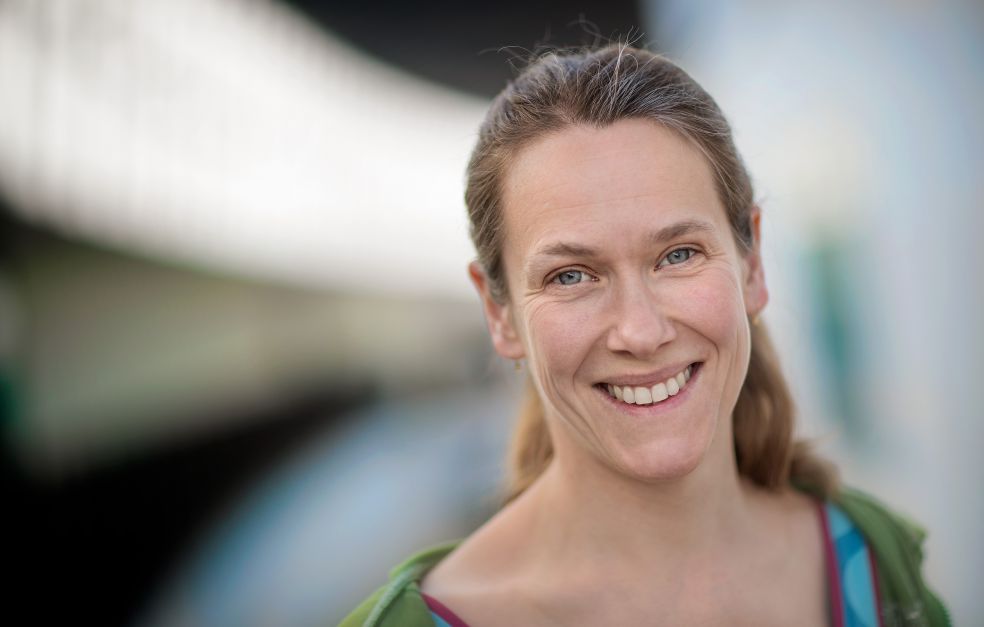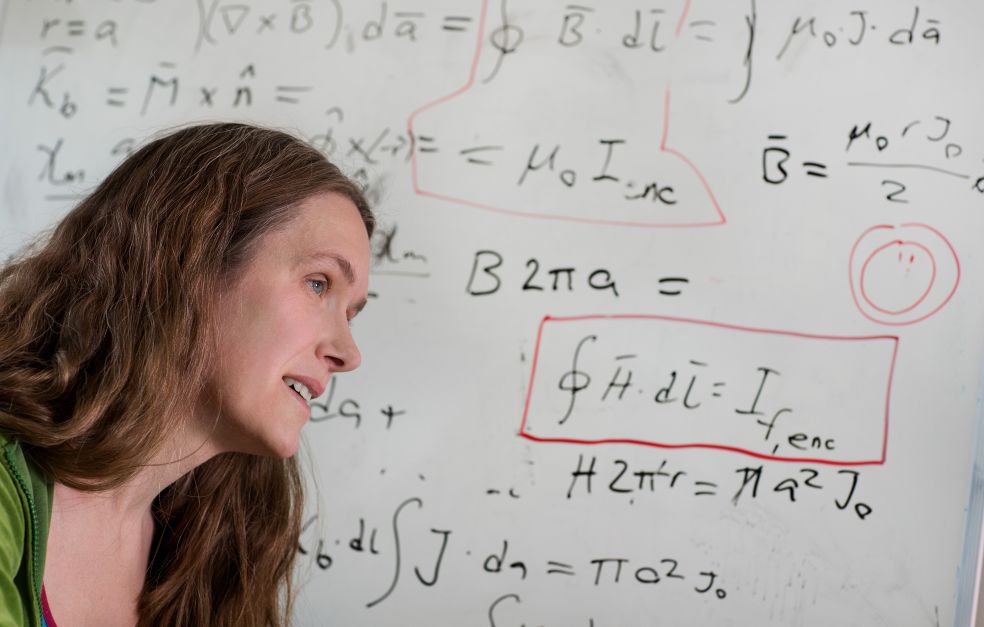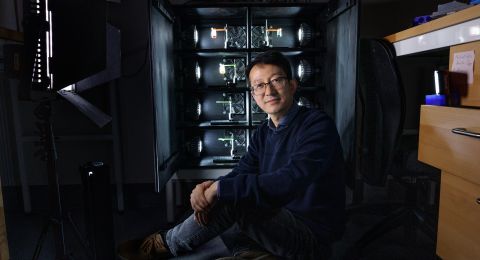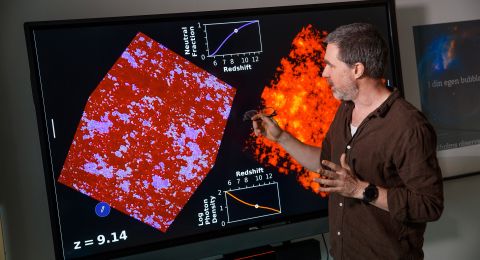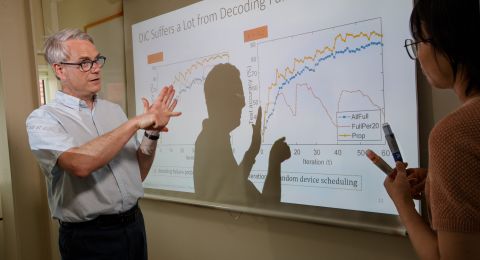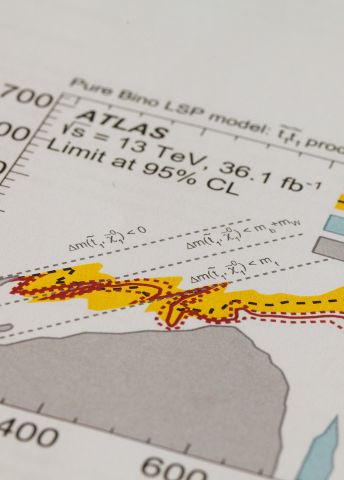
Project Grant 2017
Solving the Higgs fine-tuning problem with top partners
Principal investigator:
Sara Strandberg, Associate Professor in Particle Physics
Co-investigators:
Stockholm University
David Milstead
Jörgen Sjölin
Uppsala University
Elin Bergeås Kutmann
Rikard Enberg
Chalmers University of Technology
Gabriele Ferretti
Institution:
Stockholm University
Grant in SEK:
SEK 35.2 million over five years
The LHC particle accelerator is located a hundred meters underground at CERN, close to the border between France and Switzerland. Giant magnets in the LHC ensure that protons collide with each other at close to the speed of light in a 27-kilometer-long tunnel. Strandberg explains that this creates the conditions to find elementary particles – the smallest components of the universe.
Her research in experimental particle physics is based on data from one of LHC’s two detectors, the Atlas detector; 46 meters long, 25 meters wide, and weighing 7,000 metric tons, it is the largest detector built to date.
“I joined CERN and the Atlas Project as a postdoc in 2007, and was there when the detector was installed. Having been there, laid cables and adjusted the equipment, I humbly appreciate the enormous amount of work behind all the data it generates.”
Strandberg is based at Stockholm University and AlbaNova, but she visits CERN several times a year. The elusive Higgs boson has been found; now the aim is to find new particles that can explain the low mass of the Higgs boson.
“The LHC has in fact already delivered what it was built for – to find the Higgs boson. But we now have this fantastic machine that enables us to conduct a lot of other really interesting research. As an experimental scientist, my job is then to make sure we use the equipment to its maximum potential, and obtain as much research data as possible.”
New collaboration
Particle physicists are driven by curiosity about what the smallest particles in the universe look like, and how they work. Their efforts have yielded the “Standard Model”, a family tree in quantum mechanics to explain the relationships between the tiniest, subatomic particles. The Higgs boson was the last piece of the puzzle, and it proves the existence of a Higgs field that gives other particles their mass. Strandberg explains:
“The Standard Model describes how elementary particles such as quarks and electrons interact with each other. It explains very well the matter that we and everything around us are made of. But there is reason to believe that it is not the final theory. It doesn’t include gravity, for example, nor does it explain the dark matter of the universe.”
With the help of funding from the Knut and Alice Wallenberg Foundation, Strandberg is leading a project involving collaboration between theoreticians and experimental scientists from Stockholm University, Uppsala University, and Chalmers University of Technology. A number of international theoretical physicists are also involved.
“The grant is first and foremost a superb opportunity to build a stronger research environment in Sweden. It will enable us to learn new things in a new way. It’s incredibly stimulating.”
Seeking a top partner
The reason for the project is the huge gap between the Atlas experiment’s accurate measurements of Higgs boson mass, and the theoretical calculations, which currently produce a much higher figure. The gap can be closed by fine-tuning, but the aim is to achieve a more elegant solution.
“Like many others, I’m already concentrating on finding a supersymmetrical partner for the top quark that might conceivably extend the Standard Model, and explain why the Higgs boson is so light. This is also one of the lines of research we are pursuing in the project. Another approach is that the top partner that tames the mass of the Higgs boson is a part of a theory in which the Higgs itself is not an elementary particle, but rather a composite one.”
It may be that the unknown top partner is a little too heavy for the LHC to find. But it may nonetheless be possible to detect signs of its existence. The project is therefore trying to develop better precision measurements of the top quark, the aim being to detect small deviations in the processes that may indicate that a top partner is involved.
But Strandberg points out that no one has so far found any signs of what is known as “physics beyond the Standard Model.”
“We need to be more cunning, and leave no stone unturned – maybe we have overlooked a little twist in the problem.”
Precision measurement
Forty million proton collisions occur every second in the LHC. In most cases elementary particles are short-lived, but the detector registers signals from decay products. The huge quantity of data created is analyzed with the help of mathematical algorithms in a worldwide network of interconnected computers.
Starting in early 2019, the LHC will be upgraded over a two-year period. Strandberg thinks this is good timing, since it will give them the chance to test their new methods on data from before the upgrade as well as after it. The dream scenario would of course be to find a sign of physics beyond the Standard Model.
“But even if we don’t, I hope we manage to broaden LHC’s research programs a little, and also bring together the various research teams in our collaboration,” Strandberg adds.
Text Susanne Rosén
Translation Maxwell Arding
Photo Magnus Bergström
Facts: The Standard Model
It was long believed that the atom was the smallest particle in existence. But the electron was discovered at the end of the 19th century, followed by the proton and the neutron, which in the 1960s were found to consist of quarks.
The Standard Model is a quantum field theory, according to which there are three kinds of elementary particles: quarks in six forms (the top quark was discovered in 1995); leptons, e.g. the electron; and bosons, e.g. the photon, which carries forces.
The Standard Model describes how these particles engage with each other through electromagnetic, strong and weak interactions. All known matter, such as atoms, atomic nuclei, neutrons, and protons, are made up of quarks and leptons. The Higgs particle, discovered in 2012 at the LCH at CERN is a boson, and its field gives other elementary particles their mass.

